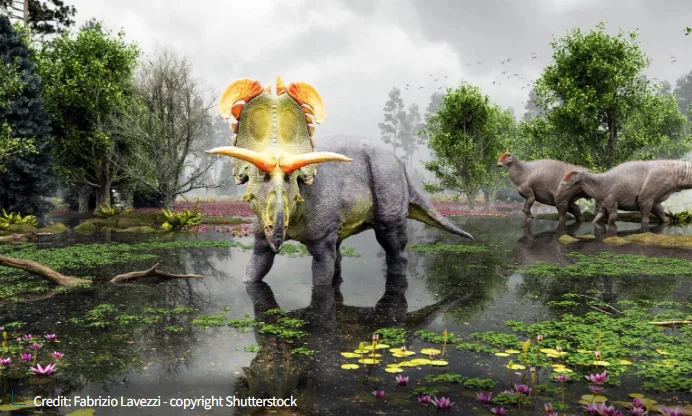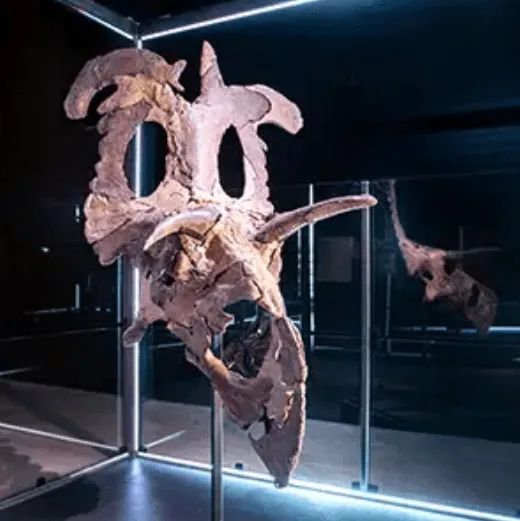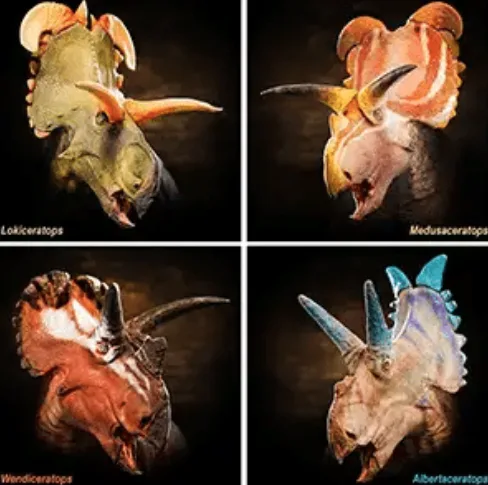A newly uncovered horned dinosaur, sporting twisted, blade-like horns and a flamboyant frill, is reshaping our understanding of prehistoric giants.
Introducing Lokiceratops rangiformis
Described in a recent PeerJ study, Lokiceratops rangiformis is the largest and most elaborately decorated horned dinosaur ever found, challenging existing views on ceratopsian diversity and behavior. This Late Cretaceous behemoth, discovered in northern Montana near the U.S.–Canada border, boasts a partial skull with striking features that set it apart from its relatives.

A Montana Fossil with a Mythical Name
The fossil, unearthed in the Kennedy Coulee Assemblage, revealed large, curved horns and an ornate frill unlike any other centrosaurine. Paleontologists Mark Loewen and Joseph Sertich named it after Loki, the Norse trickster god, due to its dramatic, blade-like horns. The species name rangiformis (“caribou-like”) reflects its antler-like adornments. Measuring about 22 feet long and weighing around 11,000 pounds, Lokiceratops roamed the wetlands of the Western Interior Seaway 78 million years ago.

Horns for Show, Not Battle
The dinosaur’s asymmetrical brow horns and lack of a nose horn suggest these features were not for fighting but for visual displays, likely tied to mating or species identification. “These skull ornaments reveal how evolutionary selection for flashy displays drove the incredible diversity of Cretaceous ecosystems,” Sertich said. Much like peacock feathers, these traits likely helped attract mates or distinguish species in crowded habitats.
A Crowded Prehistoric Neighborhood

Remarkably, Lokiceratops was one of five distinct ceratopsian species found in the same Montana–Alberta geological layer. This unprecedented diversity, akin to modern East African plains with varied horned ungulates, upends the idea that large herbivores were widely spread out. Instead, these dinosaurs likely evolved unique horn and frill shapes to coexist without interbreeding, similar to how antelopes differ on African savannahs.
A Hotbed of Evolution
The discovery highlights how isolated environments in Laramidia, the ancient western landmass, fueled rapid evolutionary changes. Small habitat differences likely drove the development of Lokiceratops’s distinctive features. “We’re just beginning to grasp the diversity and relationships within horned dinosaurs,” Loewen noted. Like Darwin’s finches, these dinosaurs evolved unique traits in semi-isolated basins, creating a stunning array of horn displays.
This find not only redraws the centrosaurine family tree but also suggests that many more species may lie hidden in unexplored fossil beds, waiting to reveal more about the vibrant ecosystems of the Cretaceous.


